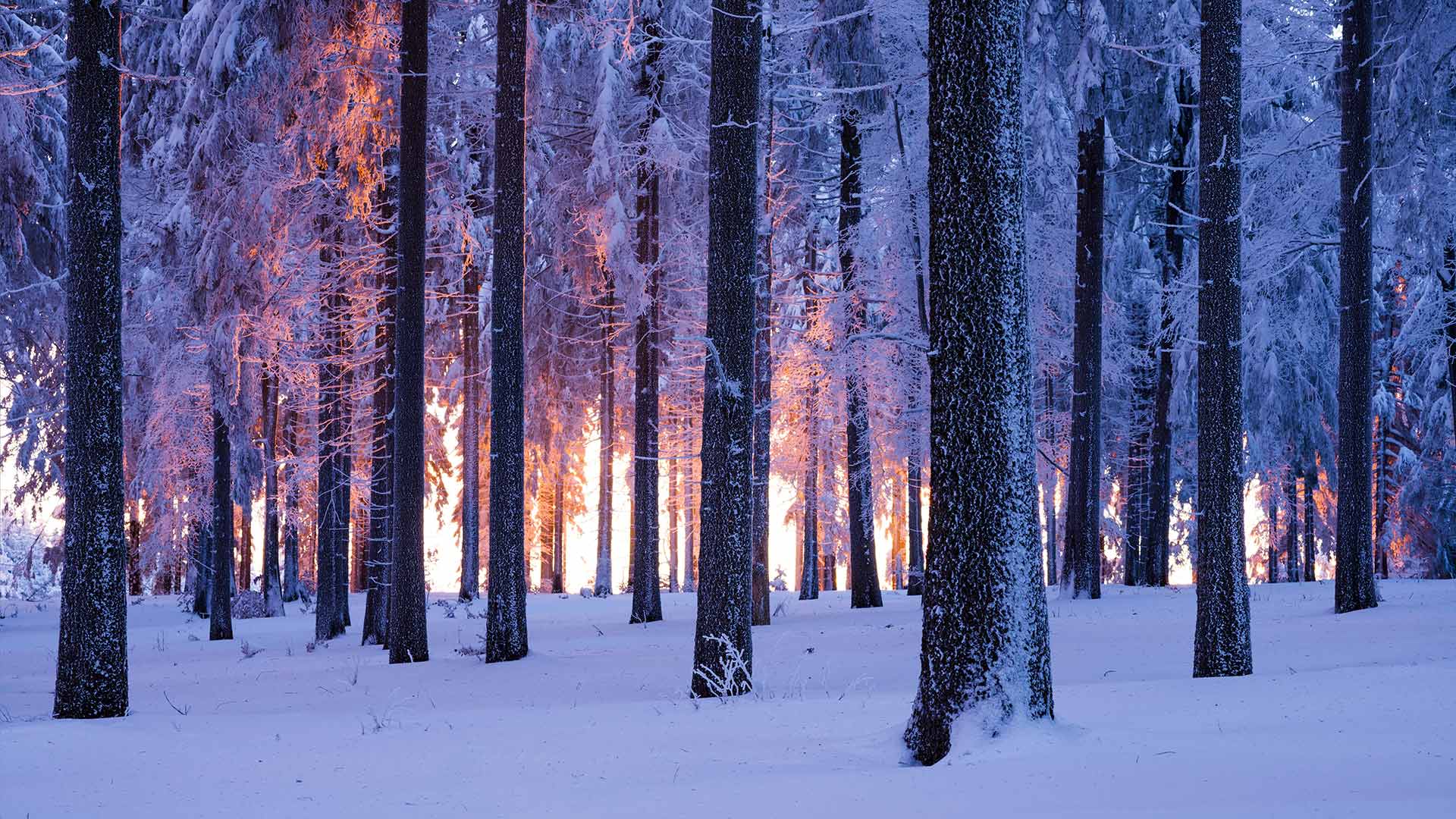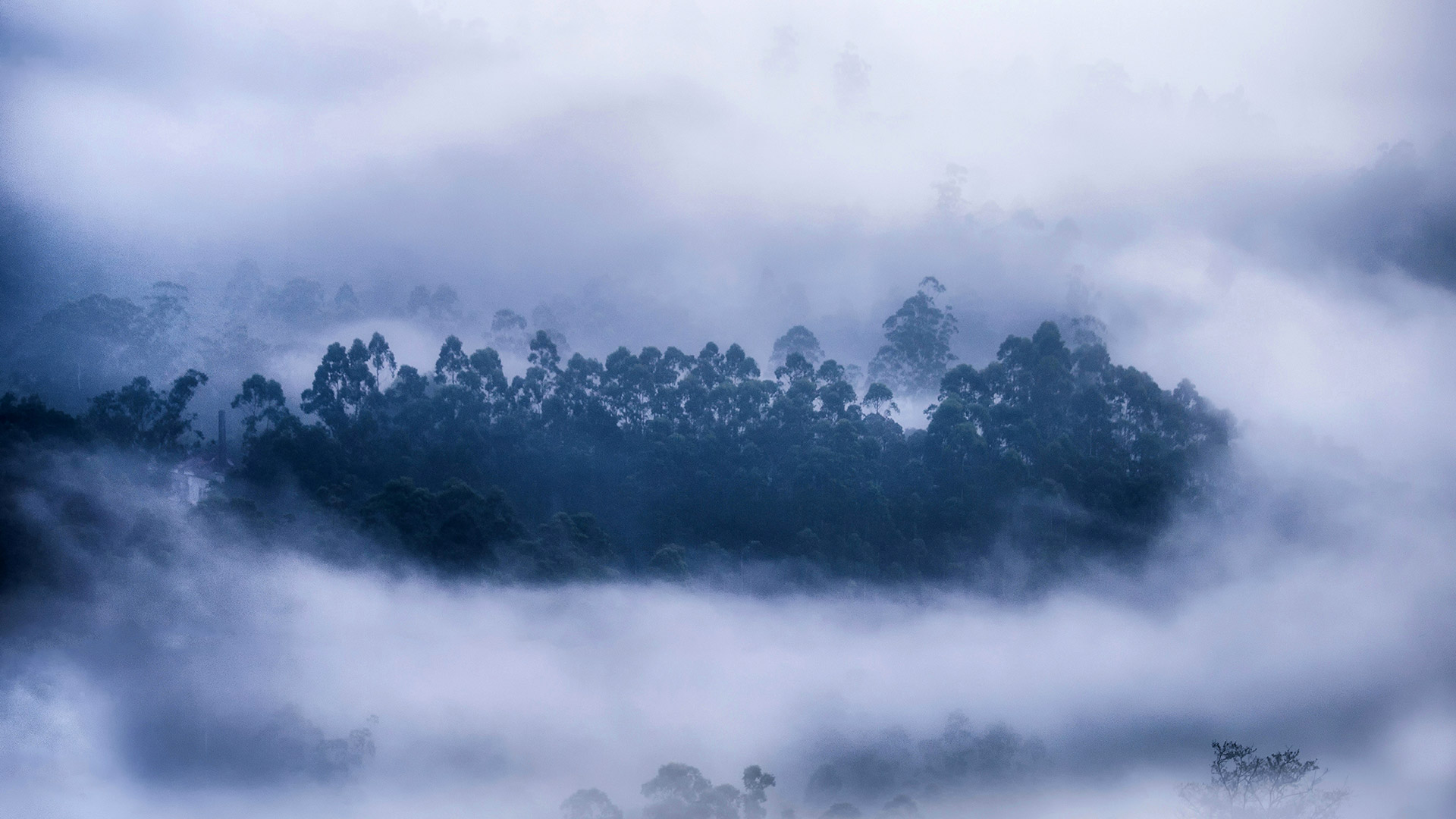涅迪克角灯塔上的节日彩灯,缅因州 Holiday lights on Cape Neddick Light in York, Maine (© Walter Bibikow/Alamy)
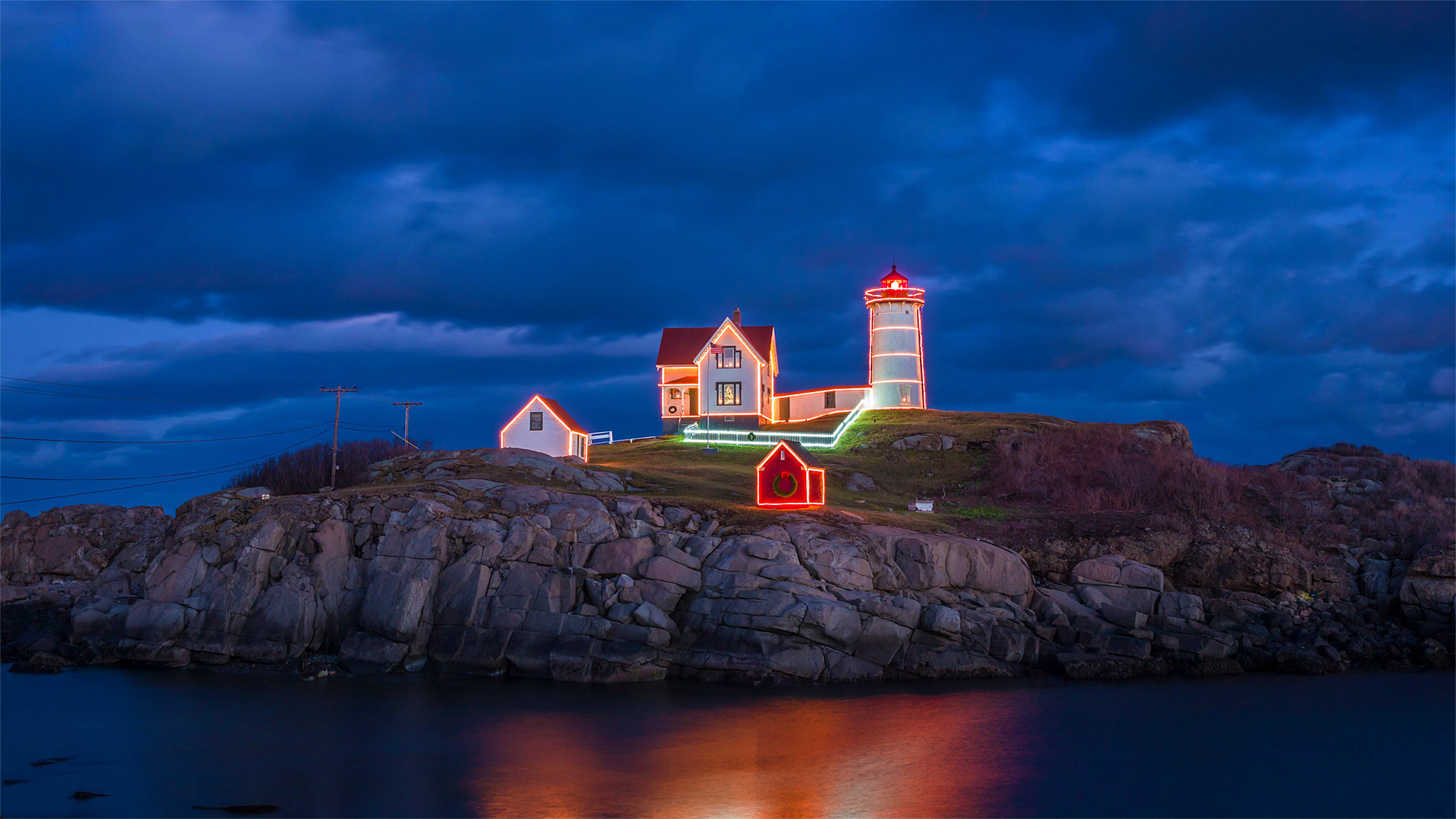
涅迪克角灯塔上的节日彩灯,缅因州 Holiday lights on Cape Neddick Light in York, Maine (© Walter Bibikow/Alamy)
A holiday beacon of light
This classic New England scene is Cape Neddick Light, one of Maine's most iconic lighthouses, all lit up for the holiday season. Every year on the Saturday after Thanksgiving, hundreds gather on the mainland across from tiny Nubble Island to count down to the lighting. It is quite the holiday tradition, complete with Santa, live reindeer, and thousands of cookies baked by locals.
'Nubble Light,' or 'the Nub,' is arguably the most iconic of Maine's 65 lighthouses. Built on more than two acres of granite island, the Nub has been protecting sailors since 1879. There's no better time to visit than when it's all dressed up for the holidays. And if you miss the winter display, you can come back in July, when it's relit for summer visitors.
节日的灯塔
这个经典的新英格兰场景是涅迪克角灯塔,缅因州最具标志性的灯塔之一,在节日期间灯火通明。 每年感恩节后的星期六,数百人聚集在努布尔岛对面的大陆上,为灯光倒数。这是一个相当传统的节日,有圣诞老人,驯鹿和当地人烤的成千上万的饼干。
“纽伯灯”或“纽伯”可以说是缅因州65座灯塔中最具标志性的。 Nub建于2英亩以上的花岗岩岛上,自1879年以来就一直为水手们提供保护。没有比盛装过节更好的时间了。 如果你错过了冬季的展览,你可以在7月回来,那时灯塔会为夏季游客重新点亮。
凯西克附近的Castlerigg石圈,英国坎布里亚 Castlerigg Stone Circle near Keswick, Lake District, Cumbria, United Kingdom (© Alan Copson/plainpicture)
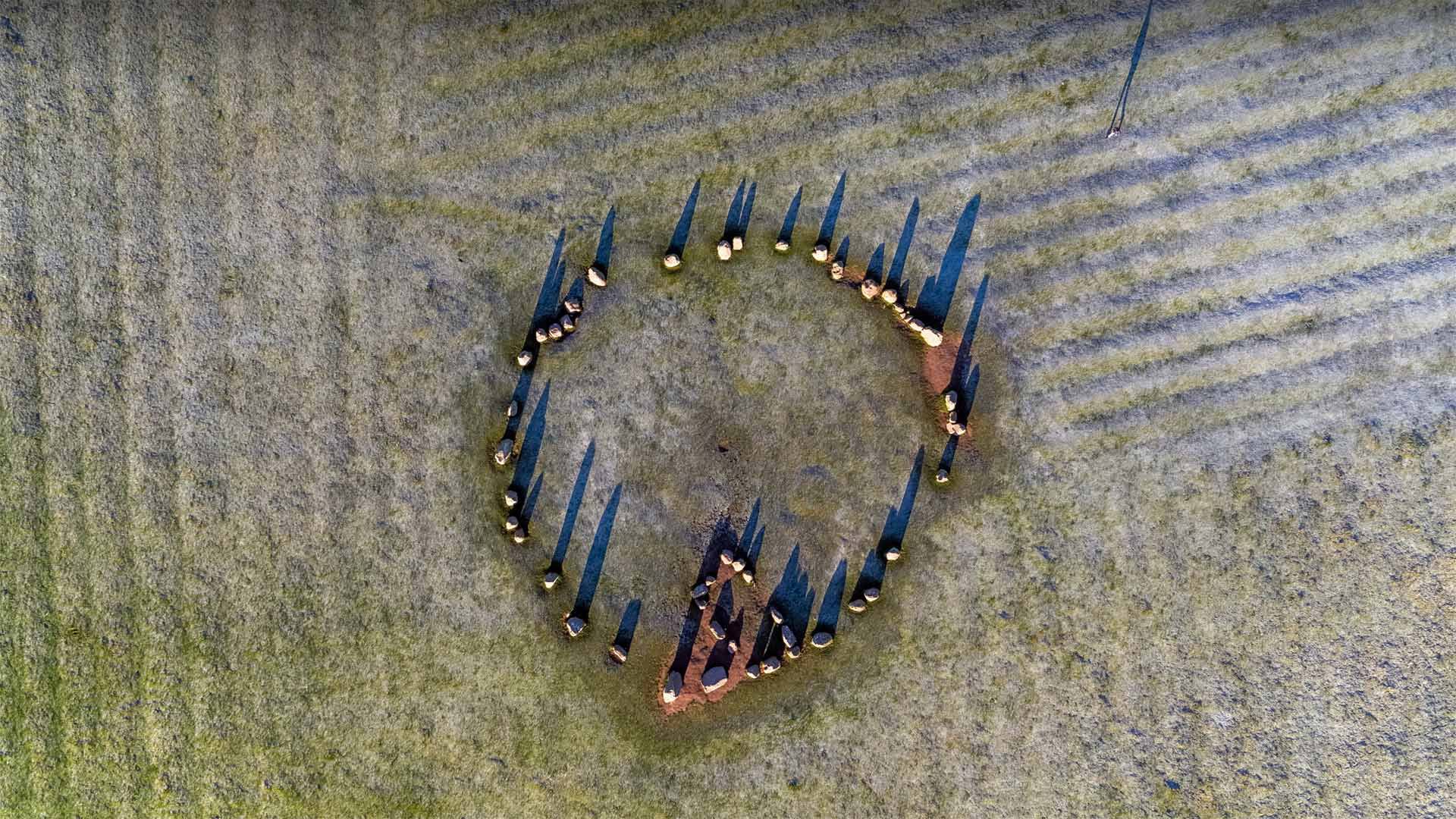
凯西克附近的Castlerigg石圈,英国坎布里亚 Castlerigg Stone Circle near Keswick, Lake District, Cumbria, United Kingdom (© Alan Copson/plainpicture)
Older than Stonehenge?
Roughly 5,000 years ago, ancient inhabitants of the British Isles somehow dragged as many as 40 giant stones—the heaviest weighing an estimated 16 tons—onto this grassy plateau in what is now England's Lake District National Park in Cumbria. They then grouped them into the stone circle at Castlerigg, seen here casting shadows from the low winter sun. Archeologists believe stone circles, were arranged to align with solar and lunar positions. They were used in elaborate rituals to celebrate occasions like today's winter solstice, the shortest day (and longest night) of the year in the Northern Hemisphere.
Castlerigg is believed to be one of the oldest of the approximately 1,300 stone circles in Britain. And while it's not as well-known as Stonehenge—which was probably begun soon after Castlerigg—its panoramic views of the neighboring Blencathra, Helvellyn, and Skiddaw mountains make it one of the most scenic. Even today, Castlerigg draws winter solstice revelers who beat drums and participate in the magical festival of Yule, in which a log is burned to symbolize the return of heat and light to the sun. And for those of you lamenting the short, cold days of winter, you can take some comfort in knowing that after today the hours of daylight will steadily lengthen, and in six months we'll have traded positions with the Southern Hemisphere and will enjoy long, warm days once again.
比巨石阵还要古老?
大约5000年前,不列颠群岛的古代居民不知何故把多达40块巨石(最重的一块估计重达16吨)拖到了现在位于坎布里亚的英格兰湖区国家公园的这片草地上。他们聚集在这里,在这里能看到低落的冬日阳光中投射的阴影。考古学家认为,石圈是按照太阳和月球的位置排列的。它们被用于精心的仪式来庆祝像今天冬至,这是北半球一年中最短的一天(和最长的夜晚)。
卡斯特里格被认为是英国约1300个石圈中最古老的一个。虽然它不像巨石阵(巨石阵可能是在卡斯特罗里格之后不久开始建造的)那么出名,但它能看到邻近的布兰卡斯特拉、赫尔维林和斯基德道山脉的全景,这使它成为风景最优美的地方之一。即使是在今天,卡斯特雷格也吸引了冬至狂欢者,他们敲锣打鼓,参加尤勒的神奇节日,在那儿燃烧一根原木,象征着阳光和热量回归太阳。对于那些哀叹冬天短而寒冷的日子的人,您可以放心一些,因为他们知道今天以后的日照时间将稳步延长,并且在六个月内我们将与南半球进行交易,并享受长期,温暖的日子再次出现。
清晨结了霜的树林,中国四姑娘山 Early morning frost on trees in Mount Siguniang National Park in Sichuan Province, China (© Robert Harding World Imagery/Offset by Shutterstock)
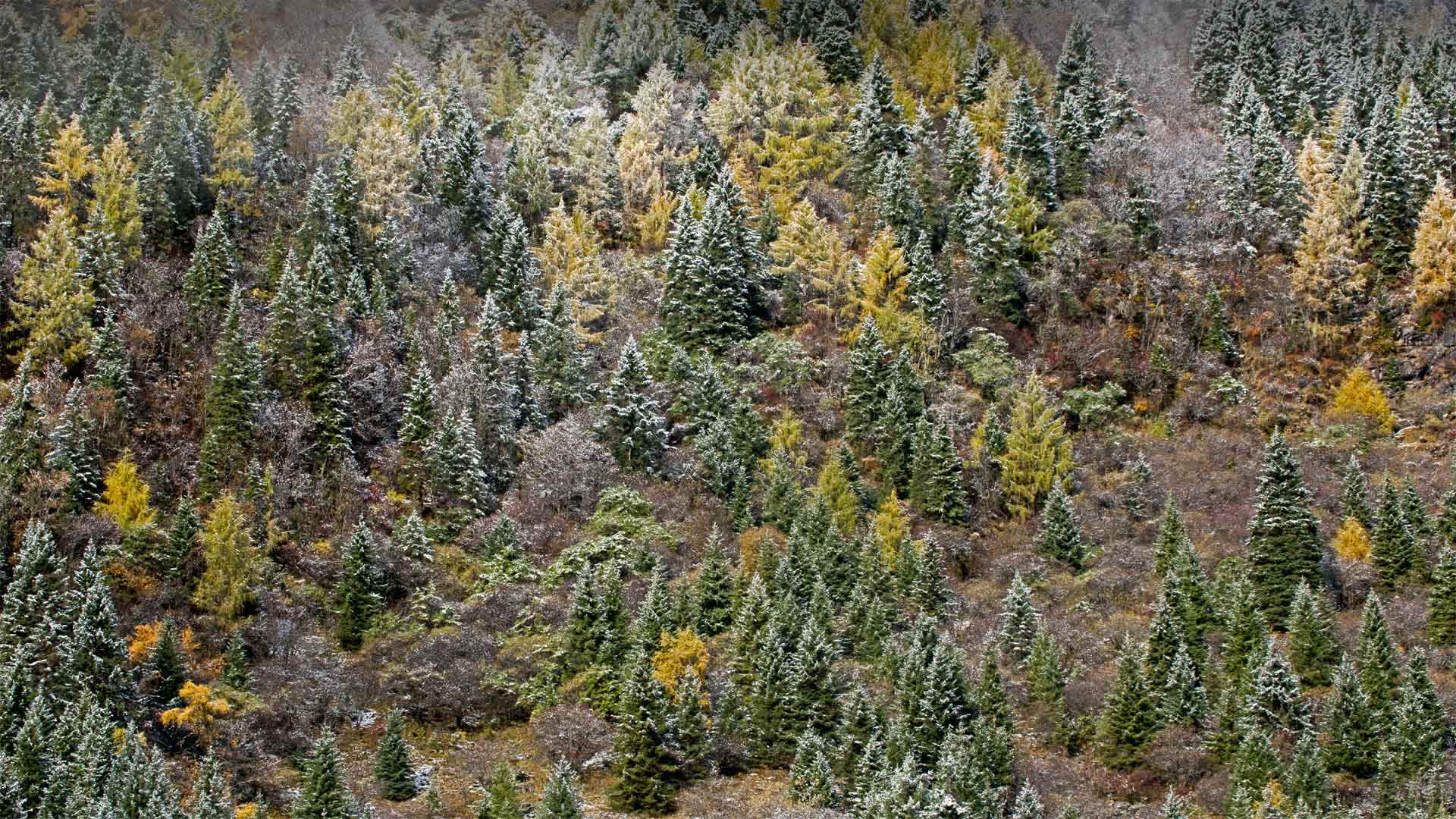
清晨结了霜的树林,中国四姑娘山 Early morning frost on trees in Mount Siguniang National Park in Sichuan Province, China (© Robert Harding World Imagery/Offset by Shutterstock)
Four Sisters, thousands of trees
You'll find this wintery, sylvan scene on the slopes of Mount Siguniang, the tallest summit of the Qionglai Mountains in Western China. Its name, which translates as 'Four Sisters Mountain,' is inspired by the local Tibetan legend behind its four distinct peaks. According to the story, four sisters saved their people using a magic mirror to turn themselves into the mountain to imprison the devil. The tallest peak, peak of 'the youngest sister,' stands at 20,500 feet and is an extremely challenging climb– it's rarely attempted and wasn't summitted until 1981. The surrounding park includes three valleys flanking the mountain and is part of the Sichuan Giant Panda Sanctuaries, a UNESCO World Heritage Site. In addition to giant pandas, the sanctuary is home to the red panda, the snow leopard, the clouded leopard, and between 5,000 and 6,000 species of plants.
四姐妹,千树
在中国西部邛崃山脉最高的山峰——四姑娘山的山坡上,你会发现这个冬天的森林景象。它的名字被翻译成“四姑娘山”,灵感来自四座不同山峰背后的藏族传说。根据故事,四姐妹救了他们的人用一面魔镜把自己变成山里囚禁魔鬼。最高的山峰“小妹妹”的山峰高达20500英尺,是一次极具挑战性的攀登——很少有人尝试,直到1981年才达到顶峰。周围的公园包括山两侧的三个山谷,是联合国教科文组织世界遗产四川大熊猫保护区的一部分。除大熊猫外,该保护区还拥有小熊猫,雪豹,云豹和5000至6,000种植物。
从环绕山峰的小径最高点看到的拉瓦莱多三峰山,意大利 Tre Cime di Lavaredo as seen from the Lavaredo fork, Sexten Dolomites, Italy (© AWL Images/Danita Delimont)
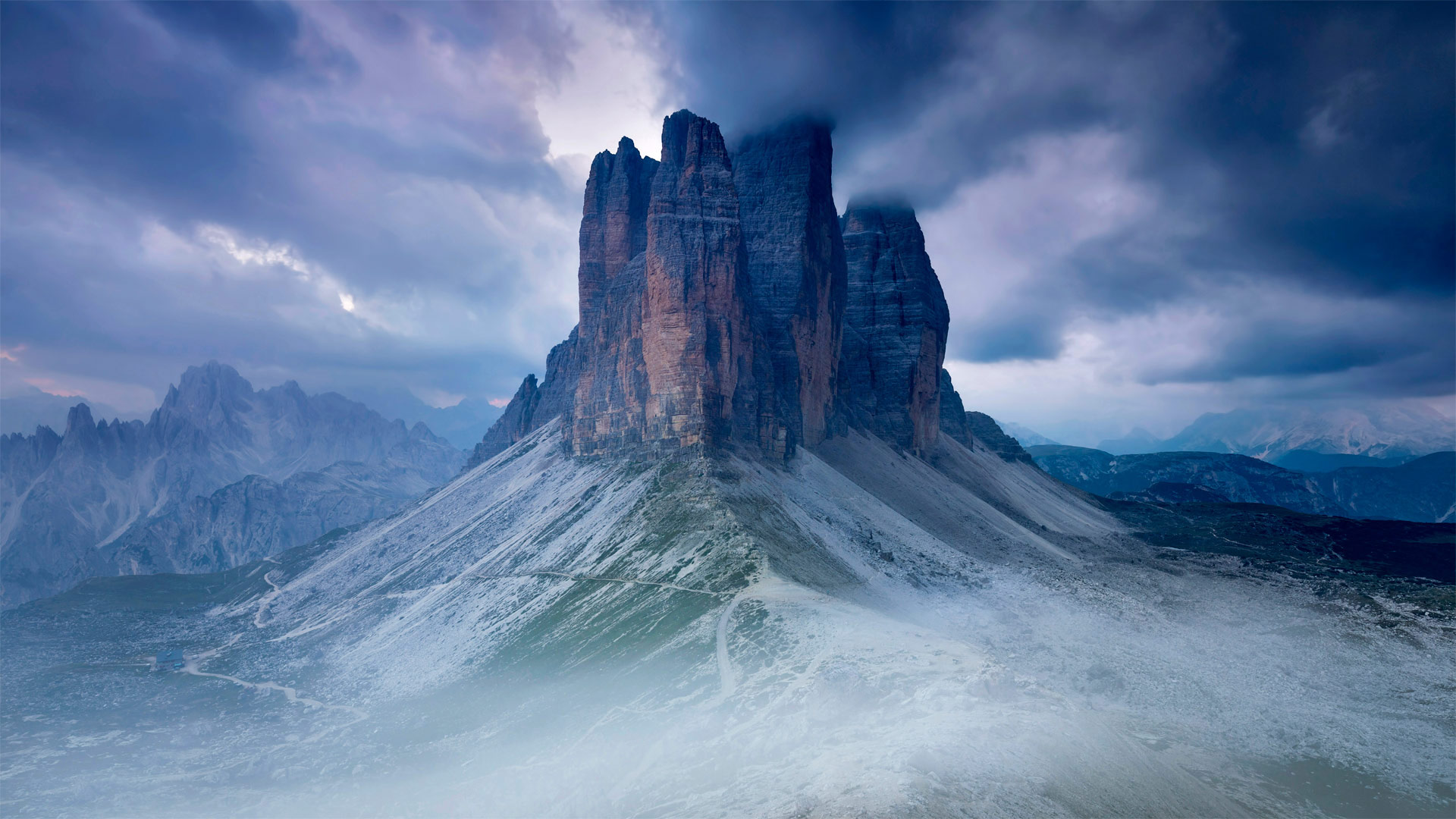
从环绕山峰的小径最高点看到的拉瓦莱多三峰山,意大利 Tre Cime di Lavaredo as seen from the Lavaredo fork, Sexten Dolomites, Italy (© AWL Images/Danita Delimont)
Where are the 'Pale Mountains'?
Behold the Tre Cime di Lavaredo, some of the most iconic peaks of the Dolomites range in the Italian Alps. The Dolomites, aka the 'Pale Mountains,' are named for the light-colored stone (dolomite) of the jagged range. This is the view from the highest point of a trail that encircles these three dramatic peaks. Usually mobbed with tourists in the summertime, autumn and spring offer a chance for a more tranquil amble along the 6-mile trail. The hike manages to reveal one stunning view after another with each turn of the route. Along the way, the hiker will pass three 'rifugios,' traditional Alpine shelters that offer drinks and meals, and even beds to stay the night.
Until 1919, the border between Italy and Austria-Hungary ran directly through the Tre Cime di Lavaredo, and there was heavy fighting here in World War I. Visitors can still see trenches and remnants of fortifications left from the so-called White War of the Alps. A small chapel, called Cappella degli Alpini, was built in memory of fallen soldiers in the area.
"帕莱山"在哪里?
看看意大利阿尔卑斯山多洛米蒂山脉的一些最具标志性的山峰。多洛米蒂人,又名"帕莱山",以锯齿状山脉的浅色石头(白云石)命名。这是从环绕这三座山峰的小径的最高点看到的。通常在夏天和秋天和春天,游客成群结队,在6英里长的小径上,你可以有机会更安静地漫步。徒步旅行在路线的每一个转弯处都能看到一个又一个令人叹为观止的景色。一路上,徒步旅行者将经过三个"里夫吉奥斯",传统的阿尔卑斯山庇护所,提供饮料和膳食,甚至还有过夜的床。
直到1919年,意大利和奥地利-匈牙利之间的边界直接穿过拉瓦拉雷多,在第一次世界大战中这里战火重重,游客仍然可以看到所谓的阿尔卑斯山白战遗留下来的战壕和防御工事的遗迹。一座叫做卡佩拉·德格利·阿尔皮尼的小教堂,是为纪念该地区阵亡士兵而建的。
日落时分被雪覆盖的挪威云杉林,德国图林根 (© Frank Sommariva/ImageBROKER/Offset by Shutterstock)
雾气环绕的森林,喀拉拉邦慕那尔市,印度 (© Ahammed Riswan/EyeEm/Getty Images)
易北河上的巴斯泰桥,德国撒克逊瑞士国家公园 Bastei Bridge above the Elbe river in Saxon Switzerland National Park, Germany (© Reinhard Schmid/eStock Photo)
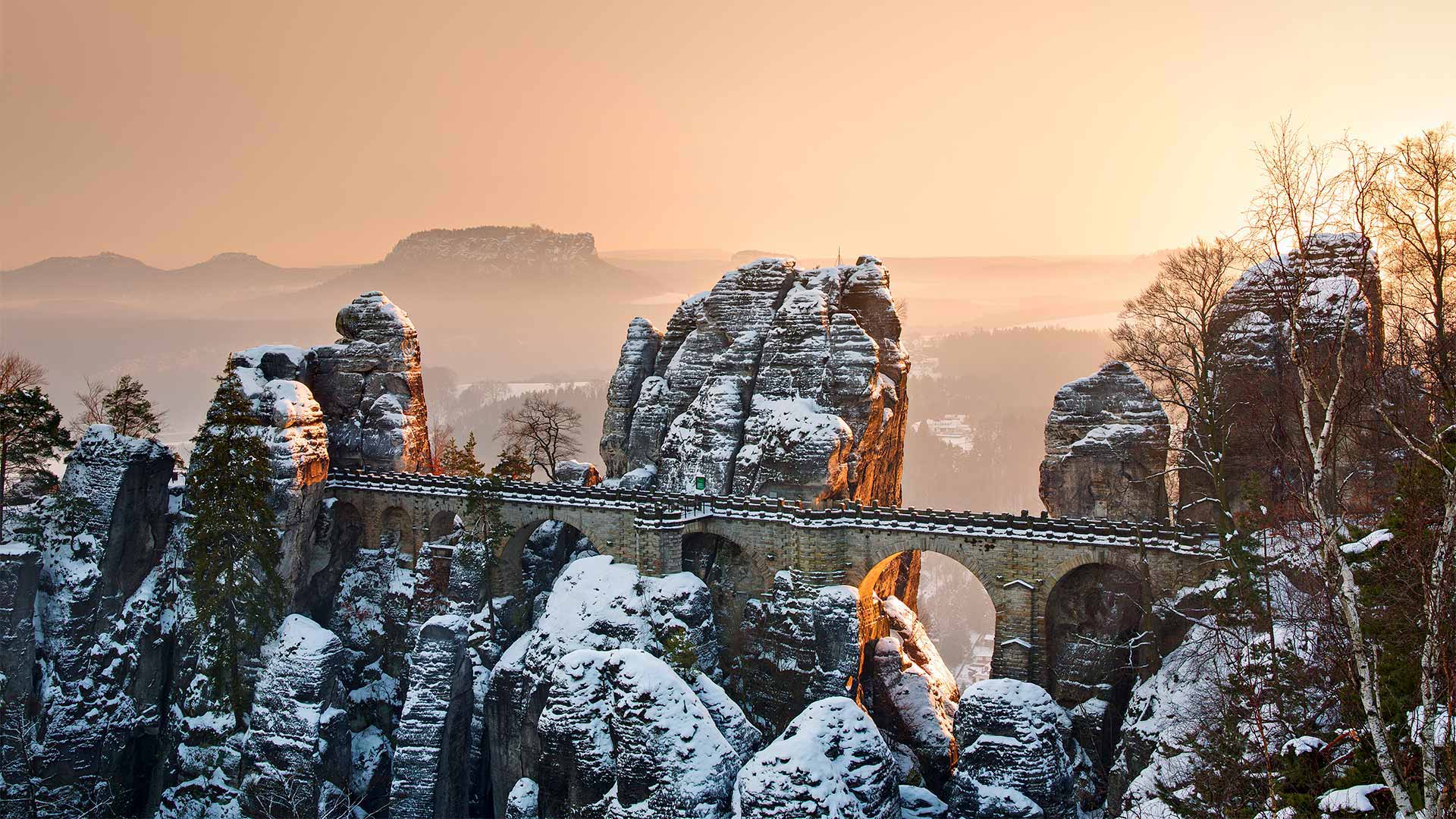
易北河上的巴斯泰桥,德国撒克逊瑞士国家公园 Bastei Bridge above the Elbe river in Saxon Switzerland National Park, Germany (© Reinhard Schmid/eStock Photo)
A bridge that rocks
Sandwiched between soaring pinnacles of sandstone, Bastei Bridge is a highlight of Saxon Switzerland National Park. But don't be fooled by the park's name because we're not in Switzerland; we're hundreds of miles away in eastern Germany, close to the border of the Czech Republic. The name comes from two Swiss artists who visited the area in the second half of the 18th century and felt the picturesque upland scenery was reminiscent of their homeland.
The park boasts untamed forests and spectacular rock formations, including the Bastei in our photo. The rock pillars here were formed by water erosion over a million years ago and tower 636 feet above the Elbe, one of the major rivers in Central Europe. If you're not afraid of heights, you can walk the bridge that has connected these jagged rocks for almost 200 years. Originally made of wood but rebuilt with stone in 1851 to accommodate the increasing tourist traffic, Bastei Bridge offers stunning panoramic views of the river and surrounding Elbe Sandstone Mountains. It also leads to the remains of an ancient castle that once stood here and is now an open-air museum.
岩石桥
巴斯泰桥夹在高耸的砂岩尖顶之间,是撒克逊瑞士国家公园的一大亮点。但不要被公园的名字欺骗了,因为我们不在瑞士;我们在几百英里之外的德国东部,靠近捷克共和国的边界。这个名字来自两位瑞士艺术家,他们在18世纪后半叶造访过这个地区,他们觉得风景如画的高地风景让人想起了他们的家乡。
这个公园拥有未经改造的森林和壮观的岩层,包括我们照片中的巴斯泰。这里的岩柱是由一百万年前的水蚀形成的,耸立在易北河上方636英尺处,易北河是中欧主要河流之一。如果你不怕高,你可以走过这座连接这些参差不齐的岩石将近200年的桥。巴斯泰桥最初是用木头建造的,但在1851年用石头重建,以适应日益增长的游客流量,在它上面可以看到令人惊叹的易北河全景和周围的埃尔贝砂岩山脉的全景。它还通向一座古堡的遗迹,该古堡曾经矗立在这里,现在成为了一座露天博物馆。
戈尔内格拉特火车站和马特洪峰,瑞士采尔马特 Gornergrat railway station and the Matterhorn in Zermatt, Switzerland (© coolbiere photograph/Getty Images)
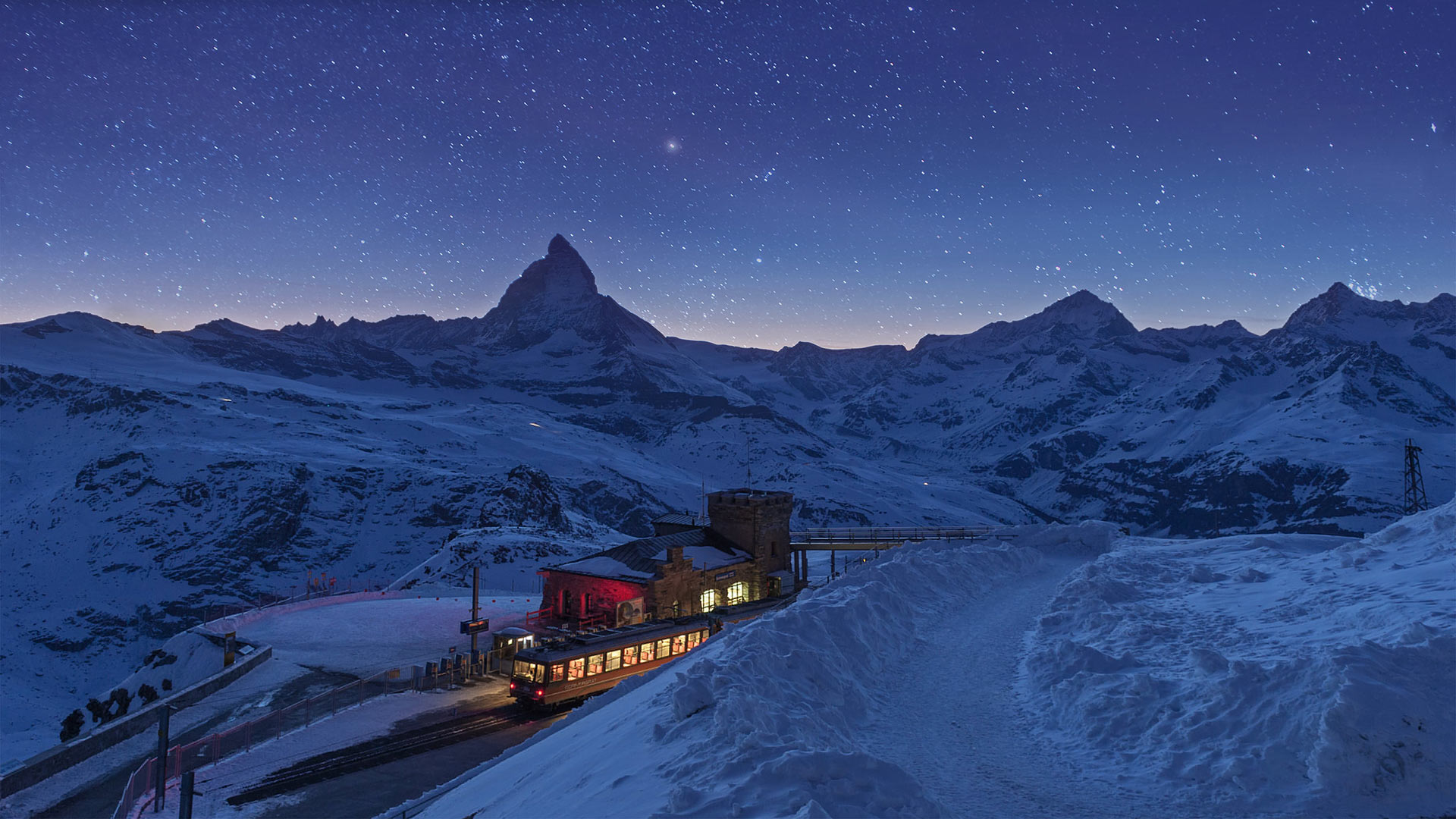
戈尔内格拉特火车站和马特洪峰,瑞士采尔马特 Gornergrat railway station and the Matterhorn in Zermatt, Switzerland (© coolbiere photograph/Getty Images)
The view will stop you in your tracks
When it comes to beautiful winter scenery, Switzerland is hard to beat. We're looking at the Gornergrat railway with the peak of the Matterhorn in the background. One of the last great peaks of the Alps to be climbed by humans, the Matterhorn was finally summited in 1865, capping off the decade or so that's been called the 'golden age of alpinism.' The iconic peak is a daunting pyramid of stone and ice, towering just inside Switzerland's border with Italy.
The train goes from the village center in Zermatt (at an altitude of 5,200 feet) to Gornergrat (over 10,000 feet) in 33 minutes, offering incredible views along the way. The train debuted in 1898 as the world's first fully electric cog railway, connecting three existing hotels. The new attraction helped to make Zermatt a popular tourist destination, and by the time the railway began winter operations in 1928, this corner of the high Alps had become a glamorous year-round vacation hotspot.
铁路旅行中令你驻足的风景
说到美丽的冬季风光,瑞士是名列前茅,很难被击败的。 我们正在看到的是戈纳格拉特铁路,背景是马特洪峰。 马特洪峰是阿尔卑斯山最后一个人类需要攀登的高峰之一,它终于在1865年被人类登顶,结束了被称为"阿尔卑斯山黄金时代"的历史。 这座标志性的山峰是由石头和冰块组成的巨大“金字塔”,耸立在与意大利相邻的瑞士边境之内。
火车从采尔马特的村庄中心(海拔5200英尺)出发,经过33分钟即可到达戈尔内格拉特(海拔10,000英尺以上),沿途有着令人难以置信的美景。 这列火车于1898年首次亮相,是世界上第一条全电动的齿轨铁路,连接了三个现有的酒店。 这个新景点使采尔马特成为一个受欢迎的旅游胜地,当铁路于1928年开始冬季运营时,阿尔卑斯山的这个角落已成为全年迷人的度假热点。
以布兰卡山脉为背景的安地斯皇后(莴氏普亚凤梨),秘鲁 Queen of the Andes plants with the Cordillera Blanca massif in the background, Peru (© Cyril Ruoso/Minden Pictures)
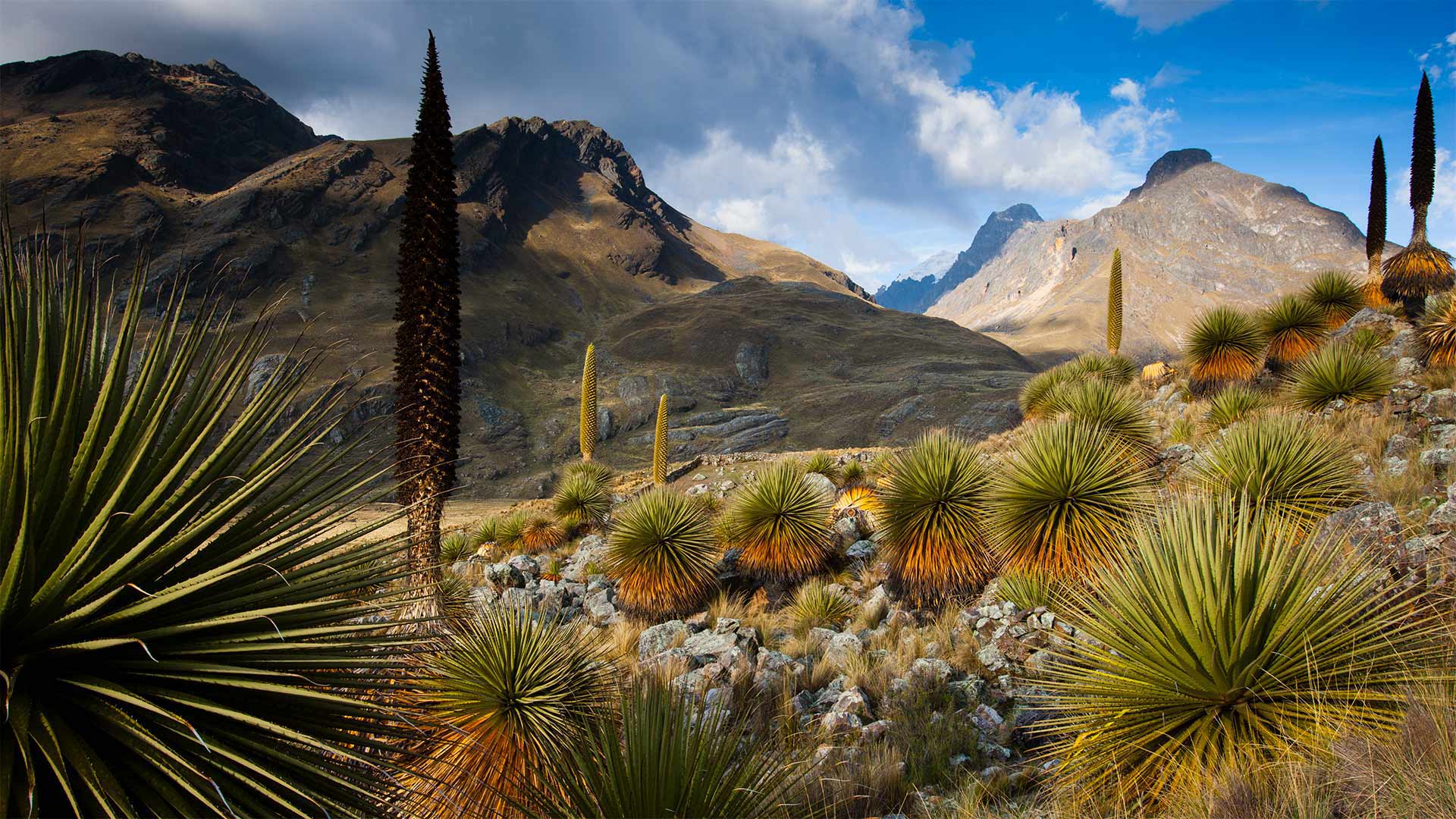
以布兰卡山脉为背景的安地斯皇后(莴氏普亚凤梨),秘鲁 Queen of the Andes plants with the Cordillera Blanca massif in the background, Peru (© Cyril Ruoso/Minden Pictures)
Mountains fit for a queen
Like sentinels standing guard, these towering stalks are flowers of the queen of the Andes, the world's largest bromeliad—some specimens can grow up to 50 feet tall. This extraordinary plant has adapted to grow only in the adverse conditions found on the high slopes of the Bolivian and Peruvian Andes. To see several of them in bloom at once is truly special, for the queen of the Andes sends up her flowering stalk just once, after a century or so of painstaking growth. A single plant will bloom for about three months, producing anywhere from 8,000 to 20,000 flowers, then die.
Because mountains present a variety of altitudes, exposures, and gradients, they host a broad spectrum of climatic zones and ecosystems. The plants in our image are thriving in Peru's Cordillera Blanca (White Range), the highest and most glaciated tropical mountain range in the world. Several peaks in the Cordillera Blanca tower more than 20,000 feet in elevation, making it a world-class climbing destination. Each step up or down in altitude seems to introduce a new ecosystem, with plants and animals that have adapted to each differentiated zone.
Protecting this biodiversity found on mountains is the theme for 2020's International Mountain Day, held each year on December 11. The UN, which founded International Mountain Day, invites us to join the conversation about the importance of mountains. On social media, use the hashtag #MountainsMatter to share about the biodiversity in the mountains near you.
群山适合皇后居住
就像哨兵站岗一样,这些高耸的茎是安地斯皇后(世界上最大的凤梨科植物)的花朵——一些标本可以长到50英尺高。这种非凡的植物仅在玻利维亚和秘鲁安第斯山脉的高坡上发现的不利条件下才适合生长。一次看到它们中的数个绽放确实是很特别的,因为经过一个多世纪的艰苦成长,安第斯山脉的女王才一次发出她的开花茎。一棵植物将开花约三个月,产生8,000至20,000朵花,然后死亡。
由于山区呈现出各种海拔,暴露和坡度,因此它们拥有广泛的气候区和生态系统。我们所描绘的植物在秘鲁的科迪勒拉·布兰卡(White Range)繁茂,这是世界上最高和最冰川化的热带山脉。科迪勒拉布兰卡塔的几个山峰海拔超过20,000英尺,使其成为世界一流的攀岩胜地。海拔的每上升或下降似乎都会引入一个新的生态系统,动植物已经适应了每个不同的区域。
保护山区发现的这种生物多样性是每年12月11日举行的2020年国际山区日的主题。创建国际山区日的联合国邀请我们参加有关山区重要性的讨论。在社交媒体上,使用#MountainsMatter主题标签分享您附近山区的生物多样性。
冬天的金阁寺,日本京都 Kinkakuji temple in winter, Kyoto, Japan (© yoko_ken_chan/Shutterstock)
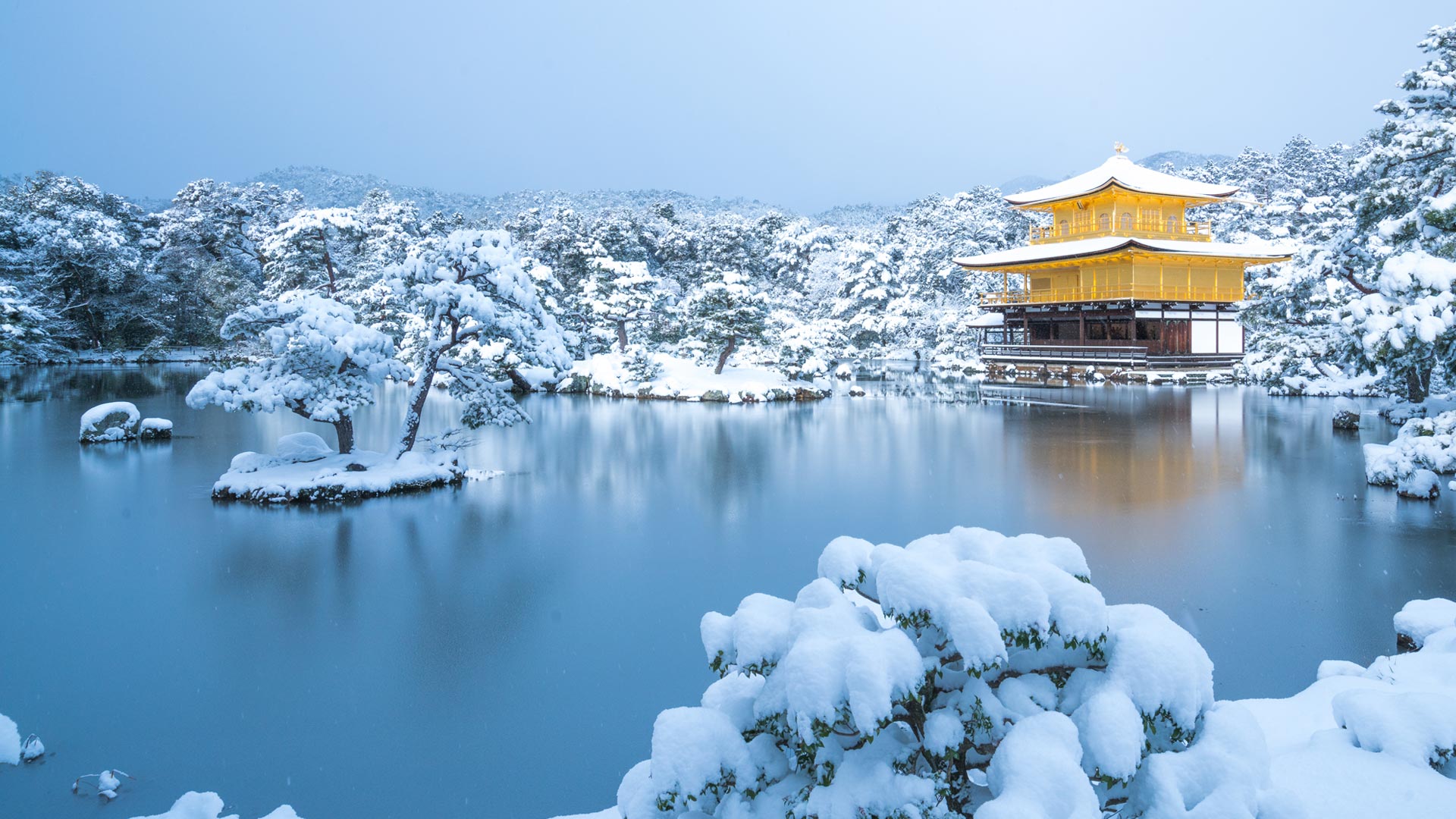
冬天的金阁寺,日本京都 Kinkakuji temple in winter, Kyoto, Japan (© yoko_ken_chan/Shutterstock)
Stunning in winter
Kinkakuji, also known as the Golden Pavilion, is one of the most famous sights in Kyoto. The golden temple that is actually made of gold, has been a popular attraction for many. During the winter, the white color of the snow contrasts beautifully with the color of the temple creating a breathtaking sight.
冬天惊艳
金阁寺,也被称为金阁,是京都最著名的景点之一。 实际上由黄金制成的金殿,已成为许多人的热门景点。 在冬季,雪的白色与寺庙的颜色形成了鲜明的对比,营造出令人叹为观止的景象。
